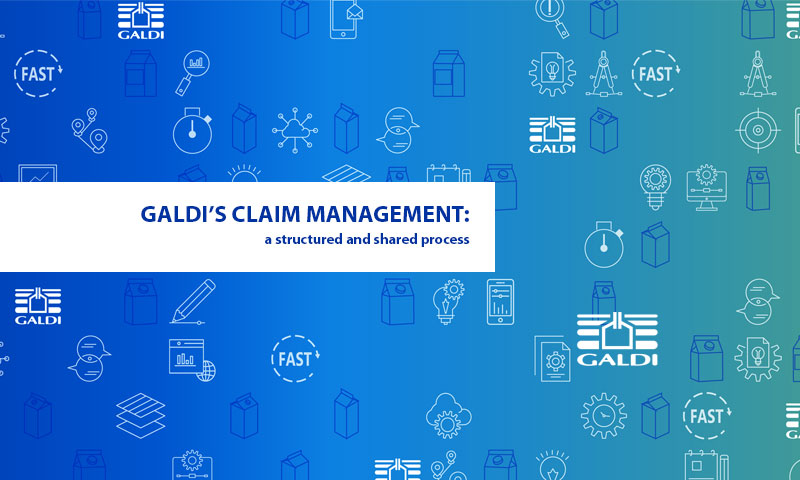More Reliable Fillers: from Claims to Innovation
Offering increasingly reliable filling machines is one of Galdi's main focuses. Research, development, tests and trials make it possible to produce packaging machines with high efficiency standards even years after installation

The mission of every manufacturer of filling machines for food packaging, and Galdi's in particular, is to offer increasingly reliable fillers.
Research, development, tests and trials make it possible to produce packaging machines with high efficiency standards even years after installation, contributing to:
- maintaining and improving the Overall Equipment Effectiveness (OEE), end-of-line phase included
- ensuring that production schedules are met
- reducing Total Cost Ownership (TCO) and costs caused by accidental breakage
Thanks to preventive maintenance and new monitoring systems, we can now practically avoid unexpected machine down times and urgent repairs.
However, in some cases, fillers do not work as they should - generating so-called claims or complaints. These have to do with rare, unexpected anomalies affecting a specific machine.
They can refer to:
- a slight defect in the packaging aesthetics
- a small software bug
- an abnormal decline in performance
- etc.
Even if the problem is solved through our After Sales support, investigating the possible causes is a must for us. Since we promised our clients efficient packaging machines, anything that undermines this pledge must be analyzed and solved.
This is why we have developed a structured and shared claim management process.
OUR PROBLEM SOLVING PROCESS
At Galdi, a heterogeneous team of people from different departments is in charge of claim management:
- Sales
- After Sales
- Design
- Research & Development
- Machine testing
The team meets every Monday to examine the reports and take stock of the progress in ongoing problem solving efforts. The process is very structured and a dedicated area within our CRM system serves as "base camp".
The control interface enables us to:
- track each report
- integrate data and solution finding processes in a single "environment"
- make the most of shared knowledge
- activate the problem solving process
- create innovation
Exchanging know-how, both incoming and outgoing, also involves Galdi's Service Business Units (SBU) across the world. We therefore decided to use English as common language.
The development of solutions has also been organized methodically: actions, resources and timing, as well as progress stages, are constantly updated and shared (using the A3 model).
PROCESS STAGES
STAGE 1 – REPORTING
Each new claim is classified according to:
- machine
- functional area or group
- problem type
- priority
We assign to each claim:
- a supervisor – selected among sales team, project managers, development or service department
- an analyst – the technician with specific know-how (an electrical system expert if the claim is related to an electrical cause).
STAGE 2 - ANALYSIS
The analyst carries out a root cause analysis and shares his diagnosis with the team.Before coming up with a solution, the team puts the alleged real cause of the malfunctioning "to the test" through several techniques (e.g. 5 whys method).
STAGE 3 - PLANNING
During a collaborative brainstorming, we select possible solutions, identifying the best one. If the problem has to do with a mechanical part, the After Sales and Designing teams work together to redesign its profile.
STAGE 4 – PARTS PROCUREMENT
In this stage we procure mechanical or electrical parts from our suppliers.
We pre-test the solution and contact the client to arrange the shipment of the material and the service appointment.
STAGE 5 – INSTALLATION
The technician installs the new solution on the filling machine. After adjusting the settings, he checks whether the problem has actually been solved.
FASE 6 - VERIFICATION
Right after the installation and in the following months, we make sure that the client's problem has been solved and verify the impact of the solution on the efficiency performance of the filling machine.
STAGE 7 - STANDARDISATION
Once the client's claim has been settled, the solution can be applied to other machines in the production stage or to similar packaging machines installed at other clients' premises.At this stage, a parallel, specific process also begins, the goal of which is to develop new solutions for our filling machines.
STAGE 8 - SOLUTION FINDING
Thanks to this structured system, the process that led to finding a solution and the information gathered therein become additional know-how for our company.
VALUABLE CLIENTS' FEEDBACK
The exchange with clients has significantly contributed to the development of new solutions.
Each feedback enabled us to make our fillers more reliable and "efficiency-proof".
We are therefore implementing a process of sharing geared toward our clients, to update them on the developments of our research and on the main stages of the problem-solving procedure:
- claim acknowledgement
- material ordering with service notice for installation at client's premises
- claim settlement and comparison data
For more complex solutions, the development stage takes several months - to study new prototypes and perform many tests before testing the machine – so this is our way to tell the client: “We are working for you and meeting your requirements is an exciting challenge”.
